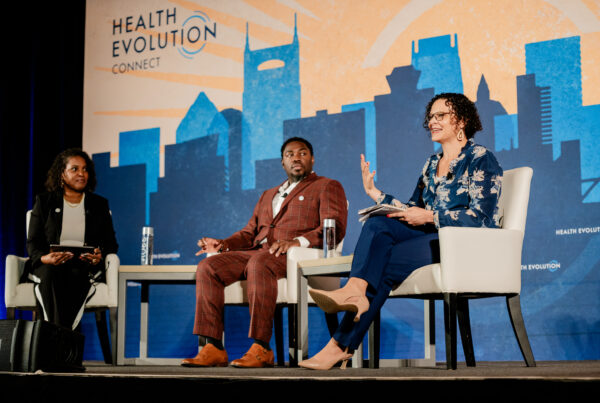While the drive toward consumerism in health care accelerated in 2020-2021, the movement began long before as health systems, health plans and technology companies deployed programs to more effectively engage the people they serve. The last year and a half, however, has highlighted how high the stakes have become both in terms of attracting and retaining patients and members as well as truly improving the health care system.
“For 20 years we’ve all been hearing promises of higher quality care at a lower cost, or at least managed cost, and those have never been delivered,’” said Glen Tullman, CEO, Transcarent, a new health and care experience company for employees of self-insured employers. “That’s the health care environment today.”
Tullman led a discussion at the Health Evolution Summit 2021 titled, Cracking the code on consumer engagement, that included Mario Schlosser, CEO, Oscar Health and Griffin Myers, MD, Co-founder & Chief Medical Officer, Oak Street Health.
What has worked thus far? A mix of value-based care, leveraging technologies, benefits design, and treating consumers as real people.
Value-based care models enable other investments in engagement
The work can begin with value-based models that, in turn, enable organizations such as Oak Street Health and others to invest in additional elements of consumer engagement, Myers said.
“The value-based model is number one. I think number two, we’re really focused on orienting the service around what a particular patient segment needs and how we can make care convenient for them,” Myers added.
Schlosser said Oscar strives to drive member engagement by leveraging its own technology platform and wrapping it together with benefit design that includes building options using the actual value calculator from the Affordable Care Act.
“Everything we build, we put into a flywheel to create engagement and trust with a member immediately when they come in. We make sure that people are in our tools, and we can see in real time what they’re doing, how they’re navigating health care, who they’re looking for,” Schlosser said.
Oscar also offers each member a five-person concierge team. Members can see the team’s pictures in the welcome kits, mobile app, or via the website. Each team includes a nurse who handles introductions.
“That right there gets you more engagement. We tested what happens if we only show you the names, without also showing you their pictures, and you get 20 percent more messages from the members if you show the pictures as well,” Schlosser said.
Digital health, data and understanding people
As consumers engage with digital platforms, Oscar can route them to the right point in the health care system or deliver care in its medical group, Schlosser said.
When people search for ER in the Oscar app, for example, that by itself is only a predicted value of approximately 10 percent that the individual will present at the emergency departments within 24 hours, but if they also have an anxiety condition that probability goes up to 35 percent. “Right there, we know it’s time to intervene by sending a message. It’s automated and enables us to quickly get in the middle of the decision process,” Schlosser said. “That’s why we knew we had to have our own tools for running a lot of campaigns and parallel testing.”
Prior to joining Transcarent, Tullman was founder, CEO and Executive Chairman of Livongo until it merged with Teladoc for $18.5 billion in August of 2020. At a time when most organizations were seeing 3 percent to 5 percent engagement rates among commercial employed and self-employed insured populations, Livongo was achieving between 30 percent and 50 percent by using data science and machine learning to figure out how to engage people more in their care and making it easier to stay healthy.
Read more: Glen Tullman on emulating Apple, the wake-up call Haven should have been and life after Livongo
“It took a few different things. One, a focus on putting members first. Two, a significant dependence on data science and actually understanding people on an individual level. And, last but not least, using technology to create a connected experience,” Tullman said.
Understanding people on an individual level is critical because consumer engagement is, after all, about working with human beings.
“The messages that are more about empathy and trust building work better for folks with complex chronic conditions because they already know how to manage the condition. They need the empathy in a sense, and we can automate some of that,” Schlosser said.
Oak Street Health has medical centers in neighborhoods and on street corners. More than 80 percent of the people who work in its centers live in the communities they serve, which creates what Myers described as “built-in cultural competence,” for adapting models to particular populations.
No silver bullet but the sauce isn’t secret, either
The three executives agreed that engaging and retaining consumers is a long-term strategic play, rather than something to undertake quickly and expect immediate results. Likewise, success will come from the right mix of tactics that include benefits design, digital tools, value-based models and a focus on humanity.
“There’s really nothing you can do, or at least I haven’t found it, that solves all of our problems,” Schlosser said. “There is no silver bullet that magically improves quality and drives cost down. It’s a ton of small stuff.”
Myers added: “The sauce is not secret. It’s just very, very hard to do, especially if you’re on a fee for service chassis.”










